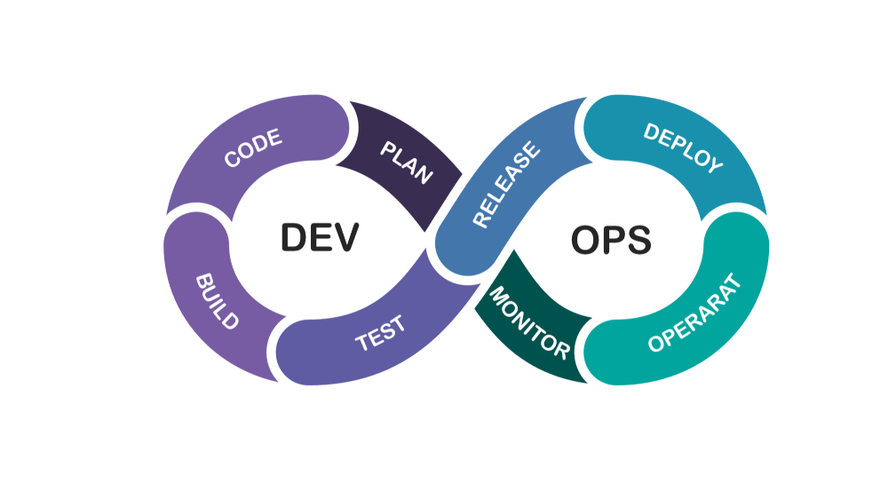What is Software Testing? Definition, Types and Importance
- July 22, 2022
- Software development
Testing to determine the extent to which the software product is understood, easy to learn, easy to operate and attractive to the…
Read MoreContent
In 2022, retailers should prioritize environmentally-friendly business practices like sustainable packaging or stocking eco-friendly goods, and communicate these efforts to customers. The image above shows data highlighting how shoppers spend their time Online Retail Industry Trends in 2022 online. Consumers are spending with brands that have an ethos on a par with their own. Retail has always been about understanding the customer but now it’s nothing short of imperative. We’ve spent an eternity saying that shoppers have all the power.
David Zimmerman, Director of eCommerce Solutions, Kensium still predicts that “more companies will offer subscription services or monthly payment options for larger purchases” in the coming year. Video proved to be a great way to engage customers in 2019, and it’s not going away anytime soon. Creating videos for your website is a great way to instantly grab and engage a customer and inform them about your product or service. Headless commerce is a solution that allows an online store’s ecommerce platform to be completely decoupled from the frontend presentation layer.
That gave Lively the confidence that a more traditional retail setup was the way to go. If you’ve found success with pop-up shops and are looking to expand into your own retail store, getting your own short-term retail lease is a perfect way to test the waters. You can temporarily rent space within an existing brick-and-mortar store for a weekend, a week, or longer. It’s key to partner with retailers who reach a similar target audience.

However, in-person shopping continues to be a significant revenue driver with more new stores opening for the first time in five years. With that trend in mind, the report predicts more partnerships, investment and M&A by commerce companies to help tie online and offline experiences to meet expectations for personalization. Buyers of all sorts — including B2C and B2B — are looking for personalized, custom shopping experiences online.
Augmented reality has been a complete game changer for ecommerce. With this type of technology, shoppers can truly see the item they’re shopping for, which helps them make a buying decision. AR really changes the shopping experience in specific industries, such as fashion and home decor because the customer can get a better feel for the item without seeing it in-person. Automation and machine learning will likely bring down costs while increasing sales for ecommerce businesses. Customer preferences are also shifting to ecommerce more rapidly than in the past.
Consumers are over three times more likely to abandon brands that “over-personalize,” compared to brands that fail to personalize enough. Including too much personal data in customized communication can make consumers feel stalked by brands. A purchase now represents your values, a demonstration of shared beliefs between customer and brand. Digital advertising costs are eating up marketing budgets, putting performance marketing–heavy customer acquisition models in jeopardy. The 2022 ecommerce trends, insights, and advice you need to succeed.
Retailers must reassess consumer behavior and shifting shopping priorities to determine the path forward. The online wholesale marketplace connecting independent retailers and brands around the world. This new wave of giving shoppers freedom and choice is great for increasing the likelihood of them purchasing more items. With many shoppers offering refunds after 14 days, some shoppers refrain from trying too many things if they’re short of cash because waiting 14 days for a refund is too long.
Building authenticity and transparency into your marketing will also build trust and maximize customer lifetime value. With both digital and physical shopping important retail trends for 2022, a seamless omnichannel experience sits at the heart of retail transactions. The omnichannel shopping experience (more on that in a moment…) has also proven the need for physical stores, with Salesforce reporting that six in 10 digital orders are influenced by in-store experience. Two years later, stores have reopened, but digital commerce is projected to maintain its upward trend.
When the customer arrives for their appointment, your staff can pull up their customer profile and make personalized recommendations based on past purchases. Glamnetic, a DTC beauty brand that can also be found in retail stores like Sephora and Ulta, has built up a loyal online audience—the Glam Fam—through its Facebook group and Instagram followers. Brand communities are also low-risk hubs for testing and iterating new products, and great sources of customer data and real-time feedback. Doe Lashes uses feedback from its Discord community members to inform product innovations and new designs—and they’re not alone.

Taken from Patrick Coddou’s ADmission webinar and Ecommerce Fuel presentationDon’t back off from global opportunities. Prepare your infrastructure for the challenges of shipping through fulfillment partners and international warehouses. At the start of 2020, 1.35 billion people were in the global “middle class” with the majority of the middle-class growth in the Asia Pacific region. Intimacy with customers won’t be accomplished via social, but instead through tiny keyboards with huge payoffs.
In fact, Macy’s paused several planned store closings when it realized its e-commerce sales were higher in markets where it had brick and mortar locations. At the same time, e-commerce companies are increasingly embracing physical locations as not only an effective and complimentary sales channel, but also a way to shape customer experiences and capture behavioral data. Forced into rethinking their strategies quickly, brands are blending their online and offline presences leveraging an established approach — omnichannel. Adopting an omnichannel strategy requires creating a coordinated, seamless shopping experience across multiple channels, re-envisioning the role of physical stores in the process. Growth in ecommerce means more brands are advertising their online stores.
Headless commerce is a solution that allows a store’s ecommerce platform to be completely decoupled from the frontend presentation layer. Make the most of digital tools and analytics to assess your customers’ behavior. I’m ready to start building or already have my own ecommerce store. Consumers and governments are making major shifts to renewable energy, sustainable environmental practices and long-term sustainable thinking. Consumers also vote with their dollars, and many prefer companies with strong sustainability practices. Looking ahead to 2022, your retail organization has a unique opportunity to develop new and innovative strategies that will empower your brand to adapt to the rewritten rules of retail.
Customers can browse your items direct from your social channels, look at your lifestyle images and then make a purchase without having to leave the app, go to the website, try and find the item and buy. So, it becomes much easier for you to follow important details regularly. This way you can step into a more strategic role as a business owner by automating tasks that take up a lot of your time. In addition to all that, you can make budget decisions based on this analysis. One of the best benefits of e-commerce automation is marketing analysis. You can identify where things are going well and where they are out of control in a very short time.
How the new wave of “try before you buy” is proving a success for stores. The rise in personalization leads to better customer relationships. Expect supermarket operators to continue paying close attention to shifting tastes and dietary desires. If they can really get their arms around the prepared meals game, they stand to become even more formidable operators, particularly in a climate that has reduced the footprint of restaurants. Experts have identified three trends that will shape the landscape over the next year. The global image recognition market is set to hit $81.88 billion by 2026.
Questions are still swirling around everything from supply chain snarls to pandemic anxiety and the volatility of non-fungible tokens, better known as NFTs. A forecasted $95bn less in e-commerce sales in 2022 compared with last year, according to the Economic Times. This is after e-commerce soared at least 20% every year between 2010 and 2020, per eMarketer. Ecommerce penetration rates are forecast to increase from 22 percent in 2022 to 27 percent in 2026. 75 percent of internet users in the US search for visual content before carrying out a purchase on a regular basis. $81.88 billion by 2026 – marking a compound annual growth rate of 19.6 percent .
Social networks like Instagram now allow brands to sell directly from the platform. NFTs will continue to be worthy of exploration in 2022, but tread cautiously. While some brands view NFTs as new ways to connect with and engage loyal fan bases, others preach prudence. Take a deeper dive into the latest retail tech innovations among the retail industry. Farther upstream, labor shortages are affecting the supply chain as ships jammed with retail merchandise are stuck offshore.
If your website is no longer meeting your customer’s needs, you might need to think about a digital transformation. The majority of online shoppers are Millennials aged 25 to 34, with Generation X closing the gap. As the e-commerce industry grows, retailers are grappling with new… The state of omnichannel today is https://globalcloudteam.com/ the result of a more than 25-year-long evolution. The infographic below charts the development of the approach, from the dawn of e-commerce to today’s omnichannel world. Living Our Values SVB’s values guide our actions, from our approach to supporting small businesses to community engagement to our ESG reporting.
Losing that trust due to “partial truths” comes at a cost – one which will be paid in both negative publicity and profitability. Technological investments also support employees motivated by career growth. And while the year ahead may hold some challenges – try not to flinch too hard at the word “inflation” – it’s also full of opportunities. Instead of simply owning a piece of digital art, NFTs for Superplastic have become a promise of community and belonging. NFTs will also get fans into Superplastic’s latest sushi restaurant, planned for Miami. Establish community rules, filter hateful language, and put resources in place to protect members from toxic or abusive conversations.
Retailers are earning the most revenue from Facebook, Instagram, Twitter, and TikTok, respectively. Nearly two out of three shoppers prefer delivery over pickup when shopping online. What we found was eye-opening — the who, what, where, and why behind our shopping experience is going through a metamorphosis. There is an opportunity for retailers to make a name for themselves and beat out competitors through omnichannel technology and automated tools. The retail industry is on a never-ending quest to get the right products to consumers when, where, and how they want.
Shopping habits are evolving, so an integrated solution that ties together multiple channels from front- to back-of-house operations can help retailers find success. Watch your competitors – you should also observe other competing businesses. However, you don’t have to implement all trends adopted by your competitors. Evidently, e-commerce companies are poised for growth and challenges ahead.
For The Drum’s Evolution of E-commerce Deep Dive, experts explain how the space will evolve further this coming year. By 2022, over 120,000 stores will be using AR technologies, offering a much richer buying experience. 30 percent of consumers say environmental factors impact their decision to purchase from a company.
Join The Discussion